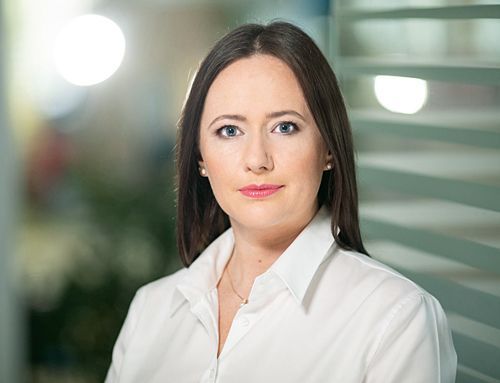Awaiting a bit of luxury
Trends
Agnieszka Baczyńska, the international leasing director at Neinver: When it comes to outlet centre management we focus on working closely with our business partners, which are our tenants in this case. One side of it is that we have to look at managing the centre as a whole but the other side is that it is most important to work with our tenants to make the business as efficient as possible. Our partnerships result in us taking specific actions. We monitor key performance figures for the entire centre and on an everyday basis we also look at the key performance figures of individual stores. We analyse how these stores function in great detail. We meet with our tenants individually to discuss their results, show where they could improve and make specific recommendations to them. As a centre manager, we organise mystery shoppers to visit their stores, hold training courses in customer service for their employees and advise them on their visual merchandising. We also conduct surveys to assess what our tenants think of us.
How does leasing an outlet centre differ from a typical mall? Is it primarily about focusing less on the range of lifestyle and food services?
The primary purpose of an outlet centre is to be a place to shop. There are no plans to expand the entertainment section. We of course have a range of restaurants and cafés that have been significantly expanded and strengthened over recent years. However, it is worth bearing in mind that visitors to outlet centres are focused on targeted shopping. Outlet centre leasing is different because for example we have different anchor tenants. The major tenants of an outlet centre are definitely the sports stores. This is something that characterises the Polish market, since such brands do not have large mono-brand flagship stores in regular centres. In an outlet centre, a shopper can find a wide and comprehensive range of such brands. Other key tenants that shoppers look for in an outlet centre are men’s fashion, denim clothing, footwear, underwear, outdoor clothing and also accessories and jewellery.
How different is this market in Poland from other European markets?
The outlet market in Western Europe is very mature and it has a much longer history, while in Poland we are in a development stage of steady growth. Premium and luxury brands are the main anchors of outlet centres in the West. We don’t have such luxury brands in Poland yet but I think it is only a matter of time. People in Poland are becoming more affluent, which is why more expensive brands, including luxury goods, are soon going to start appearing in Polish outlet centres.
What, in your opinion, is it like on the market for outlet centres? How has the market reacted to non-trading Sundays?
Looking at the situation for outlet centres, I believe the market has coped well with the change to non-trading Sundays. Our customers are so focused on seeking out bargains that they have changed their behaviour so that they can take advantage of what we offer on other days. Despite the introduction of non-trading Sundays, the turnovers of our centres have continued to steadily increase every year. Our sales results for 2019 are also very good – by Q3 we had recorded a 4 pct rise in sales on the previous year.
What new products are we to see in addition to the luxury brands you expect?
Launching new brands is currently our priority. We are opening from three to eight new stores in each of our outlet centres every year and we are planning to further develop additional services to make shopping more streamlined. We are also developing a strategy for tourists to offer them a wider range of services. Just as in Western Europe, all the ancillary customer services – such as a concierge, hands free shopping, VIP club cards and home deliveries – are the future for Polish outlet centres.
How do you build up a tenant mix for an outlet centre?
The key is to keep a balance between the different types of stores. The distinguishing feature of an outlet centre is the precise selection of its tenants. We won’t invite just any brand that wants to open a restaurant in one of our centres to come and work with us. Sometimes we even prefer to keep a unit strategically vacant and wait for a target tenant to keep the right mix and increase the attractiveness of our range. Sports brands are a pillar. Popular brands, which shoppers always like, such as Tommy Hilfiger, Guess, and Calvin Klein as well as footwear, jewellery and accessory brands are also important. Shoppers are definitely attracted by anything novel that debuts on the Polish market in an outlet centre. An example of such a brand would be the Italian store Boxeur des Rues, which began its expansion in Poland from our outlet centres.
What are your plans for the further development of Neinver outlet centres in Poland?
We see a lot of potential for the Polish market. We always keep abreast of what is happening and keep an eye out for development opportunities with a focus on strengthening the centres we already have. We are always considering possible extensions, conversions or changes to our interiors. We are thinking about reinvigorating the tenant mix and improving our buildings. We’re also preparing new projects including a retail park in Warsaw’s Ursus district, which we’re working on right now. This centre is to be next to Factory Ursus and we are currently negotiating with potential tenants.






















































